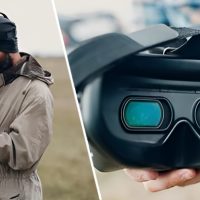In a world where innovation knows no bounds, the possibilities of drone technology continue to expand beyond our wildest dreams. As we stand on the cusp of a new era, drones are primed to revolutionize how we think about transportation. From delivering packages to transporting goods, the potential is limitless. But before we soar into the future, we must ask a crucial question: “How much weight can a drone carry?” A drone’s payload capacity varies depending on several factors, including its size, design, and power system. Consumer-grade drones have a payload capacity of a few pounds, while larger commercial drones can carry hundreds of pounds.
How much weight can a drone carry?

The weight-carrying capacity of a drone can vary significantly depending on its size, type, and technology. Let me give a better weight-carrying idea of each drone individually for better understanding.
How much weight can Consumer Drones carry?
Most consumer drones, like the DJI Mavic series, can carry payloads ranging from 0.5 to 2.5 kilograms (1.1 to 5.5 pounds). These drones are commonly used for recreational purposes and aerial photography.
How much weight can Professional Drones carry?
Pro-level drones, such as the DJI Matrice series, can carry heavier payloads, between 4 to 10 kilograms (8.8 to 22 pounds). These drones are used for surveying, mapping, and even light industrial work.
How much weight can Heavy-lift Drones carry?
Industrial or heavy-lift drones, like the Freefly Alta 6, can handle even more substantial weights, ranging from 10 to 20 kilograms (22 to 44 pounds). These are often employed for crop spraying and heavy equipment transport.
How much weight can Cargo Drones carry?
Some specialized cargo drones have impressive weight capacities exceeding 100 kilograms (220 pounds). For example, Boeing’s prototype cargo drone can carry up to 226 kilograms (500 pounds) of goods.
How much weight can Military Drones carry?
Military drones like the General Atomics MQ-9 Reaper can carry a weight of up to 500 lbs.
Remember, advancements in drone technology are continuously pushing the boundaries of weight-carrying capabilities. With ongoing innovations, we expect to see drones taking on even more significant roles in the delivery and transportation sectors in the future.
What are the Factors that influence the payload of a drone?
Here are the seven most important factors influencing a drone’s payload capacity.
Motor Power and Propeller Efficiency
The power of a drone’s motors, as well as the efficiency of its propellers, directly impact its ability to lift payloads. More powerful motors and larger, well-designed propellers provide greater lifting capacity.
Battery Capacity and Energy Density
The drone’s battery capacity and energy density determine its flight time and how much weight it can carry. Batteries with higher capacity and energy density support heavier payloads for longer durations.
Frame Strength and Build Materials
The structural integrity and materials of the drone’s frame are pivotal in determining its payload capacity. A robust frame can handle heavier loads without compromising stability.
Efficient Propulsion System
A propulsion system that maximizes the power-to-weight ratio is essential. This includes using efficient brushless motors and well-matched propellers to optimize lifting capability.
Stable Flight Controller and Gyroscopes
High-quality flight controllers and precision gyroscopes are crucial for maintaining balance and stability, especially when carrying payloads. These components ensure the drone can handle the added weight.
Effective Payload Attachment
How the payload is securely attached and integrated with the drone is vital. Well-designed mounting systems evenly distribute the payload’s weight, minimizing the risk of imbalance.
Can a military drone carry a person?
Yes, military drones can carry a person. Military drones are primarily designed for surveillance and reconnaissance but are also being developed for other missions, such as cargo transport and medical evacuation.
Jose E. Johnson is a true tech prodigy whose lifelong passion for technology and gadgets has blossomed into remarkable drone expertise. From the moment he laid eyes on his first electronic toy as a child, Jose was captivated by the limitless possibilities of innovation. As he grew, so did his fascination with cutting-edge tech, leading him to become a bona fide drone expert. With an insatiable thirst for knowledge, Jose delved deep into the intricacies of drone technology, amassing a wealth of technical knowledge and hands-on experience. Now, he shares his wisdom through insightful drone reviews and invaluable tips for fellow enthusiasts, making him a trusted source in the drone community.







Leave a Reply